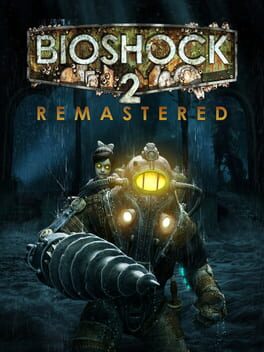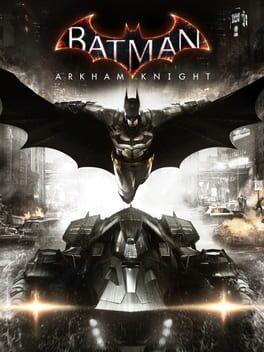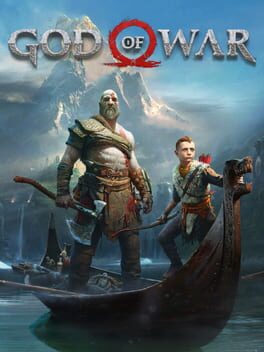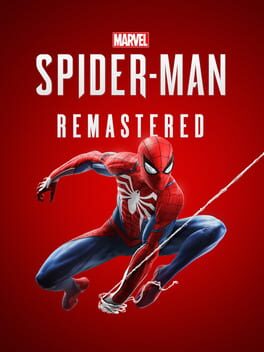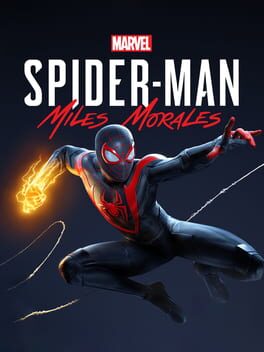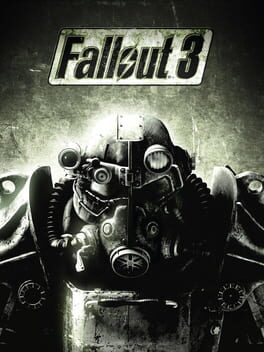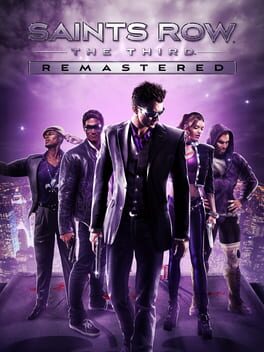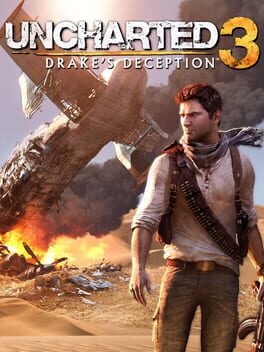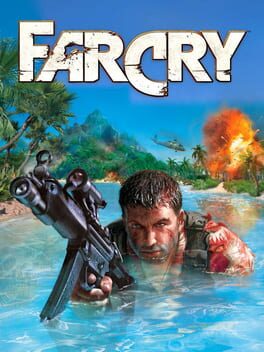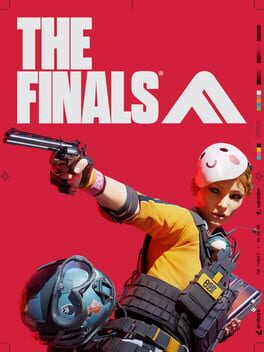20 | he/him | Huge CBM fan ~ Writing mediocre reviews for every game I play (I'm trying to improve)
People that believe in objectivity are not welcome here 🙅♂️🙅♂️
Extremely hard to please therefore I am never finding a masterpiece :(
Rating Scale: (last two are blank because everyone knows what a perfect score means)
0-7 / ½ = Awful
8-18 / ★ = Less-awful
19-29 / ★½ = Bad
30-40 / ★★ = Mediocre
41-51 / ★★½ = Average
52-62 / ★★★ = Good
63-73 / ★★★½ = Very Good
74-84 / ★★★★ = Great
85-94 / ★★★★½
95-100 / ★★★★★
Badges

Famous
Gained 100+ followers

Clearin your Calendar
Journaled games at least 15 days a month over a year

GOTY '23
Participated in the 2023 Game of the Year Event

Adored
Gained 300+ total review likes

Trend Setter
Gained 50+ followers

Pinged
Mentioned by another user

Early Access
Submitted feedback for a beta feature

1 Years of Service
Being part of the Backloggd community for 1 year

Gamer
Played 250+ games

Full-Time
Journaled games once a day for a month straight

Loved
Gained 100+ total review likes

Well Written
Gained 10+ likes on a single review

Gone Gold
Received 5+ likes on a review while featured on the front page

Popular
Gained 15+ followers

GOTY '22
Participated in the 2022 Game of the Year Event

Liked
Gained 10+ total review likes

Shreked
Found the secret ogre page

Roadtrip
Voted for at least 3 features on the roadmap

Organized
Created a list folder with 5+ lists

Busy Day
Journaled 5+ games in a single day

Best Friends
Become mutual friends with at least 3 others

Noticed
Gained 3+ followers

Listed
Created 10+ public lists

Donor
Liked 50+ reviews / lists

N00b
Played 100+ games

On Schedule
Journaled games once a day for a week straight
Favorite Games
419
Total Games Played
008
Played in 2024
167
Games Backloggd
Recently Played See More
Recently Reviewed See More
(Contains spoilers for the ending, but you probably shouldn’t care).
Far Cry... a franchise looked down upon in today’s current gaming landscape for its ongoing repetitiveness and obstinate nature—for its outright hellbent refusal to evolve and grow into something that isn’t a blatant map-marker simulator. I was curious to see what Crytek cooked up with this first entry before it became the thing to hate, and if you’ve never played this one—you might be asking the question of how it compares to its successors and whether it contains any of the aforementioned stuff? Well, not quite. But it certainly has its fair share of issues—to say the least—unrelated to Ubisoft’s modern spin on the franchise that I think are worth talking about. And yeah, you read that right… Crytek developed this first game—not Ubisoft (although they did help in publishing); which means it’s relatively free from their common open world trappings. No longer does it take the form of a sprawling sandbox FPS with RPG elements; but rather a linear (despite the lead producer saying otherwise) FPS with a level-based structure akin to something like Call of Duty but slightly more varied in its gameplay design. (Side note: I’m judging Far Cry as if it was made today, because I don’t like experiencing games through an “objective” lens nor would that review be anywhere near accurate to my true feelings—and thus I would feel like a fraud for endorsing a game because it was revolutionary for a time).
Firstly, can I take a moment to gush about the cover for this? It’s so irrefutably iconic. A bloody Jack Carver emerging from a clear-as-day river set on a tropical island of sorts wearing that vibrantly ruby Hawaiian shirt with a massive gun sticking out the water with explosions—well, exploding in the background? Sorry for my language, but it’s peak. There’s nothing like it, although I’ve always associated this pure display of testosterone with the third game… for whatever reason those two are linked in my mind, perhaps it’s the similarity in location? I think I may be experiencing the single-person version of the Mandela effect, either that or I’m a complete idiot (the latter is far more likely). I wish this at all contributed to my score of the game, but alas—it does not. I wish I liked the game as much as I fucking adore its poster. But you’ll see throughout this review that it’s the only thing I’ll ever be caught singing its praises for (besides the visuals)—because I’m sure as shit the game isn’t worth any of that.
What do you think of when I mention… “Far Cry”? Is it the facade of a living, breathing open world? Is it the bombastic or often stealthy ”do what you want—how you want” nature of its gameplay that gives the player plenty of options to utilize? Maybe it’s the memorably spine-chilling, meticulously crafted villains? It could even be the very tainted name of Ubisoft itself? Either way, you will find exactly zero of those characteristics here. Never have I seen a franchise so detached from where it eventually winds up, except maybe with Assassin’s Creed—funnily enough that’s also another IP that has become synonymous with Ubisoft’s mishandling of franchises, but I digress—that’s a topic for another review (maybe an Assassin’s Creed Valhalla one (eventually 👀). Although with having said that—you’d probably expect to find absolutely no semblance of its later identity here… right? Well no, the two separate entities actually share quite a few similarities, even if most of them are comprised of half-baked ideas that only really blossom into their full potential later down the line. Some of these staple Far Cry systems are widely known as: the glider, binoculars, stealth—and in turn the machete, enemy patrols, and first person driving (surprisingly similar to modern Far Cry’s); in many ways it’s a completely different beast… but in some you can still see that untapped formula waiting to get exploited into oblivion. And so it walks—or should I say falls face flat—into one end of a line that consists of systems being underdeveloped vs overtly “perfected”, I’ll let you take a guess on which end it lies. This shouldn’t come as a shock—I mean of course these systems are inferior, what did I really expect going into a 2004 game? Definitely not the visuals. It might be a hot take to say that Far Cry is the most stunning game to come out during its release and a few years after—at least from a fidelity outlook. You can almost feel its warm breeze flow through its densely foliaged jungles—of which there are many; saturated colors of emerald-greens and sky-blues directly contrasted against the fallen blood of your foes. It’s that distinction between the two that I find so captivating; it’s paradise… yet you’re faced with the worst of what the world has to offer: genetically mutated monstrosities. I’ve always been curious about why that is, why this franchise decides to choose these remote locales that strip away your connection to the outside world. I know the answer for the latest entries is to give the player that sense of isolation—to drop them into danger incarnate and ask them to survive and adapt at their very basic instinctual level; to go from being the hunted to the hunter, albeit with a few modern twists via guns and explosions. But why did they decide to go with a tropical island here? Well I would’ve hoped for something as thematically potent as what I just described… but no it was because an outdoor environment had never been done well before (I’ll be referencing this interview throughout the rest of my review since it’s the only one I could find). This was disappointing to hear for a multitude of reasons. For one it makes Far Cry seem like a tech demo—granted it was one at the time, but for modern day audiences this will do nothing to make them engaged because its priorities were presentation over everything else. Themes are a central part of experiencing art and can make an otherwise boring game worthwhile, where Far Cry falters is that it has no messages apart from a senseless commentary on privatized science and genetic engineering? But these elements are given the weight of a feather and hardly seem intentional—more like a by-product of the story.
An ex-military soldier (Jack Carver) has washed ashore a tropical island—or an archipelago if you want to be accurate—after getting his boat blasted with missiles by paid mercenaries. Our objective you ask? Well it changes from scene to scene… but at the beginning? To find Valerie Constantine; the journalist Jack Carver was with before everything went to shit. And so the nightmare begins (for me, literally and figuratively). The opening cinematic this game opens up with is a mess. An unbridled, disjointed, awful mess. I recognize this could be the point… it very well could be! Oh those pesky predictable ambushes!! You hate when those happen, right!? Those never happen. Obviously it’s meant to be unexpected to all, but that scene being paced at 2x speed while events happen in reverse—and then back to normal order… was certainly a choice. I don’t think anyone would quite understand it on their first try unless they were paying godly amounts of attention; I had to rewatch it after the fact to even understand what was happening (might be a skill issue). It exemplifies that classic “BOOM POW BANG” structure that every game from the fifth/sixth console generation was dipping their toes into. It was all about “Action! Action! Action!” no substance—maybe some if there was enough room! You gotta hook those players in, man! Well of course; shooting, explosions, carnage, destruction, parkour, it’s all there! Did it hook me in? Nope. From that point on I knew exactly what type of game this was. One of nonsensical narrative. If we’re to look at the story as a whole… it’s clear that events happen for the sake of the thrill & moving the plot forward; one thing is resolved, another is introduced—literally from moment to moment. And bad pacing is the product of this; to the point where ¼ onwards feels like the third act. Just continuously action-oriented, and nothing else. I understand that resolving and introducing plot points is sort of the way narratives work… I’m not an idiot, but its hasty nature makes it hard to pinpoint exactly where you are in the story, and so the result is fatigue... from experiencing the excessive dumping of monotonous objectives. Some of you might say… “It’s an action game! That’s the point”. Well, sure. But what about variety? I can’t find the fun in shooting a bunch of samey—annoying enemies for the 300th time while going from room to room in a dull laboratory. And I know what Christopher Natsuume (the lead producer) said when he was asked “Does that mean that there will be none or only few in-doors environments?”. Supposedly the majority of the game is set outside, and he’s not lying—that’s true, but I counted up how much time the player spends indoors vs outdoors; and the gap isn’t as huge as he probably wanted you to believe at the time. You spend roughly 35-40% of your playtime indoors shuffling through dark and drab corridors; going from an underground section to another old-boring warehouse. His answer about players not wanting “to stay indoors the whole time” in a game set on a tropical island is very true! I don’t. So why did he make me do that for a huge chunk of the game? For variety and contrast he says! My counterpoint: There’s already enough variety with the numerous jungles that are present here. Like—I love the beginning location of this game! It’s so vibrant—with life galore, birds in the sky—chirping, fish in the waters, sunrays beaming through copious amounts of thick leaves. The affectivity this game possesses is bewildering… in the opening hour that is. But then… you’re going in and out of open/enclosed spaces every 10 minutes and it gets tiring. And that’s before it devolves into monster slop. I’m not trying to say “ban indoor environments”, they’re fine in sparsity for this type of setting, but 40% of the game? That’s way too much. I've started to notice how obsessed the 5-7th console generations were with adding monsters/genetically mutated humans in their narratives as plot devices, or is that only me? Either way, from the second quarter onwards it becomes completely unrecognizable from the franchise’s later entries. Trigens are introduced as a lazy attempt at enemy variety… and the game instantly plummets. It was clearly chasing the trend of wanting to be a pulpy blockbuster B-movie. No real artistic value (in my opinion). No subtlety. Predictability and all. It’s almost comically unreal how expected everything is. Like of course we have to add a betrayal in there! And an entire fucking nuke at the end! How else could Far Cry possibly conclude its story—after one-upping its ridiculousness scene after scene (in a bad way)?
“Your ass is grass!”
Luckily we have a protagonist that matches that energy. Protagonists have never been Far Cry’s strong suit, besides Jason and Ajay I’d argue—but even then they’re severely complimented by their respective villains (less so Jason, but you get the point). And you know that common complaint thrown at the protagonists in those two games—how them handling guns, blowing up and killing people right-left-and-center makes no sense? Well that’s not really an issue here. Like I mentioned before—Jack Carver is an ex-military soldier. But that’s almost a double-edged sword. It completely omits him from an interesting arc! The satisfying thing about Jason was that he was virtually a frat boy who went from being an entitled brat to an overwhelming force of nature; he was badass, confident, and a compulsive killing machine. It allowed for attachment and at least a little bit of intrigue. With Jack it’s more like you’re living through him, projecting yourself onto him because he’s such a blank slate and devoid of any defining characteristics—besides his whole macho ordeal. I did enjoy his wacky, hammed-up personality at the beginning, even if the acting was… questionable at best, and comically awful at worst. It works for what the game is trying to do but I found myself getting irritated with him near the end—his voice got borderline grating, but I think that was because I was starting to hate what I was playing? It could’ve been that or the fact that Jack started to sound more and more like a whiny toddler. I was convinced he was a schizophrenic in all honesty too, sounds weird—I know, but he talks like a campy 80s action hero despite everyone else speaking fairly normally. He says crazy, out of pocket shit, and I honestly felt like he was exaggerating his sentences for an imaginary audience at every turn. It’s either that or he’s off the walls fucking insane (maybe he misses his glory days???). On the opposite end of “normality” we have Valerie and Doyle. It’s 2004, so I wouldn’t expect much from side characters apart from one-note archetypes charading as to having characteristics. Valerie is a damsel in distress—but simultaneously capable at times? Which is odd. It doesn’t make much sense since she’s a CIA agent. And Doyle is a scientist who speaks in an overtly monotone, disinterested tone, with money being his big motivator by the end. That’s pretty much it. I’m sitting here thinking about those two, and I can’t come up with anything to say. There’s nothing there. Boring stuff! Let’s move on.
So, I think the biggest shock that came to me when I started playing was how military this felt; something the later entries completely abandoned. It seems to me like that’s a product of its time though, since a myriad of games were doing that when this released. I don’t know why this has to be focused on militarism, I find that nobodies arriving or landing on islands/secluded regions are far more compelling to me. But regardless, this aspect is evidently shown through almost every aspect of the game. The score takes a more drum-heavy approach, boasting for marches and… drills—you can almost hear the stocks of guns hitting the ground. Carrier - Combat and Menu-1 seem to be the most glaring examples of this. If the rest of the tracks aren’t more of this, then they’re either very quiet & calm pieces (I’ll explain why later), or jungle themes since Jack is—well, practically lost in countless jungles throughout the game! That’s all I observed about the score since a lot of it is repetitive, generic, and not that exciting. But since this is indeed very militaristic, the combat also compliments that; it takes a semi-realistic approach rather than an arcady one. Guns have proper recoil, their size affects movement speed, you even have a stamina bar… would you believe that? Suffice it to say, I’m not a huge fan. When the game is already a chore to go through, it doesn’t help that I have to carefully observe how much I sprint and jump. It creates tedium and prolongs the game, and I’d say it’s one of those useless game mechanics akin to something like “item weight” in an RPG. What is its purpose? It’s never been done well before, unless it’s at the forefront of an indie game built around movement or something. Shooting is wildly inconsistent too. Headshots are your go to in Far Cry, but some of the hitboxes are placed awkwardly so you’ll sometimes one-shot enemies, and other times have to hit their head multiple times. Anything else—like shots near their higher/lower bodies is entirely redundant. I also encountered a bug that made my sniper scope keep glitching out, so I couldn’t really use that comfortably either. I was rocking the suppressed MP3 for half of my playthrough because it’s easily the best weapon for stealth… which is a bizarre oddity in and of itself.
There’s no point to it. Systems literally don’t work around it. This wouldn’t be an issue if the game didn’t actively encourage it throughout almost every level, but they do (which is why most of the tracks sound that way). So there’s a couple parts to this. One, there are only two silent weapons—those being, the previously mentioned MP3, and the machete; but the thing is, the MP3 isn’t introduced until later in the game and the machete doesn’t kill enemies in a single hit (even from behind), meaning… they’ll detect you in an instant if you attempt a kill which will then alert your position to the other enemies. The second part is that the baseline of your presence in this game is undetected, that is huge; whereas in your typical Call of Duty game, it’s detected. So the funny thing is, Far Cry presents you levels with particular objectives that are stealth oriented, but on contrary places AI in those levels that detect you in an instant—that you can’t kill stealthily, all while developing no systems whatsoever that actually allow you to maintain that baseline. There is no way for you to complete these levels stealthily—at least early on, it’s simply not possible. It’s a weird aspect of this game that I feel wasn’t even thought about during its development? Since characters will react disappointedly to getting detected in a level… but, what does it want me to do? It’s peculiar. I don’t think I’ve ever seen a game that wants you to be stealthy, but doesn’t actually create systems to make that possible. I’m baffled by this, seriously. I don’t get it. This is a huge reason why I dislike this game so passionately. It’s not fun because there’s only so many ways you can go through a level causing destruction and carnage.
Some of these levels are beyond confusing too. It’s something older games used to do for the sake of it I guess? It’s not at all clear where you’re supposed to go at times, since the minimap glitches out; but it’s also because the levels are laid out in a convoluted way. One example comes to mind, it’s when you’re driving through a series of very small islands separated by rivers made up of lava. You’re supposed to reach an area by jumping over several hills with your vehicle, but there’s many curves, many ground imperfections, you can’t see anything, so you’ll randomly drive into lava and die—which results in trial and error gameplay. It’s incredibly frustrating.
Just all in all not a fun time. I hope this franchise starts to pick up with the second game (since I’m playing through the entire series). It’s probably the one I know the least about? So that should be interesting.
(This isn’t a part of the review). I’ve been so busy recently I haven’t had a chance to write more of these, which is a big shame… I had a lot of fun with this one though. Not my best work but this game fucking sucks balls, man. Next one should be on Uncharted 3.
Playtime: 8.9 hours
Every Game I’ve Ever Played - Ranked (By Score)
Ubisoft - Ranked
Far Cry - Ranked
2004 - Ranked
(Non-spoiler review, but the third paragraph contains minor spoilers for the second half of the game)
I probably shouldn’t have made Silent Hill: The Short Message my first foray into the Silent Hill franchise, and although it shares no connection to the other entries, I wish I would’ve played those first to be able to give more insight into how well it stands against them, but the damage is done… so whatever! I’m not going to go too deep into this one, as it’s a free—two hour horror game akin to some random steam indie, and I don’t want to spend too much time thinking about this—honestly? Complete and utter fucking waste of potential.
The idea of a self-contained, standalone, high-budget horror game aiming to convey a brutally honest and sincere story of anguish with mental health undertones is brilliant, but the execution is shockingly piss poor here. At times—most times… it feels as if this was written by a film student without a single creative bone in their body. It’s generic, with blatantly underdeveloped themes due to its tight—not even two hour—runtime, and its worst aspect is how on the nose the writing is; throwing constant talking points at you with the subtlety of a sledgehammer. Some people are excusing and chalking this up to how short the game is, and that’d make sense—clearly that’s part of the issue, but it’s still an issue. It doesn’t matter if there’s a reason for a particular shortcoming… a shortcoming is still a shortcoming. And for me personally, if a game is talking at you rather than guiding you through the experience… it becomes exhausting to play. “Bullying is bad”, “Suicide is not the answer”, “Talk to people you’re close to about your problems”, is it me or did I just get transported back to 2017 when Netflix’s 13 Reasons Why released? Like fuck me! Come up with something more interesting to say about such complicated issues. I know this isn’t the best comparison, but a game called Gris delved into similar topics and was substantially more subtle and in-turn meaningful about them—and not only that, it had gameplay that meshed well with its writing and aesthetic to a degree. But that’s on the completely opposite side of the spectrum as people said it felt too abstract; and I guess that’s a line these games have to toe sometimes… but I much prefer the latter.
And it pains me to say all of this, because there are some good ideas at play here. Specifically the whole child abuse angle, I think the game does well to showcase the dread of having to endure a parent’s—a monster’s spiraling mental stability; circumstances continuously worsen until you finally break and all of their mistakes ripple into the rest of your life… leaving you to pick up the pieces. Like a dark cloud hanging over you, chasing you through every step of the way known as life—every loud thud, getting closer and closer; wondering if you’ll ever escape them... It’s a haunting metaphor that the game doesn’t fully pursue, as I’m sure “the monster” is linked more so to Anita’s friend: Maya, as they both share the same sweater—rather than her mother. I suppose the metaphor works both ways. Maya and Anita’s mother are two sides of the same coin, both events drastically propelled Anita’s life into chaos and pure misery; so I think it makes sense if they’re both chasing her throughout the maze, acting as a personification for life itself. But that’s sadly where the positives end. The 15 points I gave has everything to do with that thread. Whereas everything to do with the: “I’m ugly”, “She gets more likes and followers than me” story is woefully inept at conveying anything engaging… at least for me. And I’m not saying real people don’t experience feelings like that—they obviously, very much do! It’s sometimes hard not to when so much of your life is based around seeing the highlight reels of other people’s lives in the form of social media, but a game isn’t real life—and I don’t think it has any business portraying something so mundane with nothing new to say. I genuinely think my personal experience with bullying is more creative, and it feels weird to power scale “bullying”, but fuck me if it isn’t true! You’ll have to take my word on that one though, I am not elaborating further… But that’s pretty much the entire reason why the story didn’t click with me; and so the ending with the clear, hopeful sunrise directly contrasted against the bleak and fog-filled start menu… didn’t feel earned to me. It’s a nice way of conveying an arc of sorts, but at the same time… was it impactful enough to make me care about it? Nope, I can’t say that it was. But that’s not even the worst part… the gameplay is.
I’m not well-versed with walking sims, I don’t think I’ve ever really played one for longer than a few hours. But as far as I can tell, there doesn’t seem to be much here? It’s very linear in the way that the player is literally tasked with going from one room/hallway to the next, to look at notes, which more often than not will trigger a chase section—you then complete it, and the cycle restarts. It’s nothing groundbreaking—in fact, it’s among the most generic gameplay loops I’ve ever seen; and along with all the issues I’ve gone over forms a really dull experience. Its most aggravating aspect are the aforementioned chase sections. These are little “puzzles” that you have to solve by finding the correct door in a maze while outrunning a monster. And there’s definitely something exhilarating about them; running—but seemingly never being able to escape it, hearing those powerful footsteps bang against the concrete floor every step of the way—right behind you, while you slowly open doors and what-not… but when it’s so heavily rooted in trial and error—which it is, it becomes a slog. The final chase is the most guilty of this, because you’re essentially running through countless rooms that all look the same trying to find five random photographs, and if by chance you die then you'll have to repeat the entire thing; and I can’t emphasize this enough… it’s BORING, it’s AWFUL, it’s HEADACHE INDUCING. I had exactly zero fun with it.
The funniest thing by far is that Silent Hill: The Short Message is basically a UE5 tech demo… with the one huge downside being that it runs like complete fucking ass! The FPS go from the high 50s to the 30s very often due to how many assets are on screen. I’m convinced there’s forced motion blur too? But I’ve seen nobody mention this so I can’t be sure, all I know is that turning the camera felt like shit—and I couldn’t see anything. Lip syncing is also terrible, although maybe that’s intentional? Either way, it doesn’t look good and makes focusing on the cutscenes difficult because I’m constantly distracted by its weird visuals. And if this is what the future of UE5 looks like for the Playstation 5… then I don’t want it. I’d rather get a technically competent UE4 game with consistent performance that doesn’t take me out of the experience. I don’t think UE5 is viable for this console generation, as the only way to achieve stable performance would be through very heavy-handed upscaling techniques that we’ve seen plenty of games use so far ahem Jedi: Survivor, ahem Final Fantasy XVI; and both of these are using older engines! So yeah... but maybe on the Playstation 6!
All in all? This game made me want to kill myself.
Playtime: 1.6 hours
Every Game I’ve Ever Played - Ranked (By Score)
Playstation Exclusives - Ranked
Silent Hill - Ranked
2024 - Ranked
This review contains spoilers
My Uncharted: Drake’s Fortune review if you want more context (beware of the quality difference! I feel like I’ve improved a lot since then).
Uncharted 2: Among Thieves is often heralded a masterpiece, the best of the franchise, and is certainly one of the most beloved Playstation exclusives of all time—with people praising the abundance of exhilarating high-spectacle set pieces, the pulpy nature of both the story and characters, and the pure adventure of it all. If you want a review that’ll regurgitate all of that to you… then you’ve come to the wrong place. I like this game. I enjoyed it. It’s good. And it’s a step-up from Drake’s Fortune. But in my humble opinion, it’s severely overrated, and I’m convinced most people take a big dose of copium/nostalgia when they rate this game a perfect score (not that you shouldn’t). And I get it! This isn’t a first-time playthrough for me, I used to play these first two games religiously when I was younger, and I loved both of them, but as you’ve just read—my love for them has only deteriorated. Recently I’ve found myself longing for something more, something more personal, something that might challenge me—however that may be, and maybe that’s on me for placing such expectations on an Uncharted game, but I go into every game with those expectations—sometimes they’re met, sometimes they’re not—regardless, I appreciate the games that make me feel, more than the games that are nothing but a short stop at the entertainment venue. Which is all this game is. It’s not complex, it’s very simple in fact—too simple. There’s no finesse or depth to the combat, the platforming is nothing but an excuse to prolong the game and give you a chance to look at some beautiful environments (the only valid reason), the puzzles are still the most undemanding and pointless inclusions I’ve ever seen in a game like this; everything—from the gameplay to the story is by-the-books and uninspired. It’s like Uncharted 2 is an appetizer—something light before the main course; an experience so weightless, that you’ll forget it ever happened within a week of finishing the game (I know how silly that sounds given its acclaim). But you might ask… why the three stars (albeit an extremely low three)? Well for that reason alone: the entertainment value. I can’t deny that I had fun. So from here on out, this review will be split into three parts: the story, characters, and gameplay. And will detail why I—personally—believe these aspects to be a front for Naughty Dog to fill the screen with destruction galore and a bunch of big explosions.
I’m not going to shamelessly recap the story, if you want—here’s a short video that’ll do just that in case you haven’t played the game, but… who hasn’t? So if you can go off by memory, then do that—but let’s not kid ourselves here, this game doesn’t have much of a story so you’ll be fine!
I want to paint a picture for you. Imagine laying down on your bed during a rainy night, turning on your PS5, booting up the game… and you hear it. Those drums—in quick succession, building. The brass coming in with an adventurous and heroic melody, slowly dying down to reveal a melancholic strain that—signifies something more, something deeper; before building one final time to finish in an epic flourish that combines both parts. That’s right… it’s Nate’s Theme 2.0. Differing from 1.0 in the way of more instruments, but I’m no music expert so I can’t really elaborate on that. This theme—unlike the actual game—imbues nostalgia in me on a level I can’t describe, and is able to deliver more emotion—than the entirety of the game—in less than two minutes. Greg Edmonson clearly wanted to iconify something, and he succeeded with flying colors. This singular theme is some of the best video game music I’ve ever heard, and clashes tonally with the story of Uncharted 2 in a way that has always stood out to me. It’s deep, thought-provoking, and emotional—whereas the story is none of those things. In typical Uncharted fashion, it’s an amalgamation of tropes from a bunch of action-adventure movies that were released in the 80s, with the huge one being Indiana Jones; the globe-trotting adventure, the romance, the betrayals, the artifacts, the villain’s self-serving desire to rule the world—among many, many more. Which is why people often defend the pulpy nature of it. They say “It’s not meant to be thought about!”. They say “Don’t take it so seriously!”. They say “Who cares? It’s just an action movie!”. I say… is the genre of action-adventure-pulp an excuse to write a painfully mediocre script that massively prioritizes style over substance whilst expecting the audience to not question any plot decisions? Because there’s a ton of stuff that doesn’t make any sense in this game; alongside creative decisions I fundamentally disagree with (I’ll go into some of those when I talk about characters). So as per usual, Nathan Drake is back to steal another artifact so he can stock up on some V-Bucks given how his last adventure left him broke—both in terms of relationship and financial status. I’m bringing this up because it’s one of my biggest issues with the story here; there’s hardly any connective tissue between Drake’s Fortune and Among Thieves. It’s a sequel, yes, but I’m confident anyone could start with this one without batting an eye. It’s a return to normalcy. A return to the status quo. Last game’s story? Oh that! Forget about it… I mean it. Nate and Elena’s promising relationship? Yeah? I said fucking forget it dude… or else. Because they got together and broke up off-screen! It’s a shining example of the similarities between Uncharted and other action-adventure/espionage films such as Indiana Jones or James Bond—odd example, I know—but it’s an issue that plagues a lot of these massive blockbusters, the fact that nothing ever progresses from one to the next apart from obscure references. It’s all a clean slate! None of it will ever amount to any meaningful character work or a storyline (or a part of one) that develops throughout the entire series. I understand that’s a defining characteristic of these films/games, but it’s an aspect that’s always been seared into the back of my brain while playing—that none of it matters, the outcome will always be the same. And maybe it speaks to my disinterest in the genre of action-adventure pulp, but it’s hard to be invested. It’s hard to care. And is that an unfair mindset to hold… since that’s exactly what Naughty Dog were aiming for? I don’t know. I can’t tell you that. Maybe. Maybe not. All I can do is tell you how this game made me feel. And it made me feel precisely nothing. If it weren’t for some of those high-octane set pieces, this would easily fall into the forever nothingness of… “mid”.
To be completely blunt, there’s not much worth talking about in terms of story—that wouldn’t be me mindlessly recapping it while interjecting at certain points with a comment. It’s all based around beats like “Hey, take a look at this map/note/symbol”, “Let’s go here”, set piece ensues, which now that I’m thinking about it… is a critique in and of itself huh? But I’d much rather talk about Among Thieves’ implementation of the supernatural… You can probably tell by my “tone” that I don’t really like the supernatural element in this franchise at all. Now, this is the part where a lot of the Uncharted fandom is divided. Some fans love it—exclaiming that it’s what gives these games their own identity; while other players (myself included) dislike it because of their intrusiveness and out-of-place feel. I want to preface that having supernatural elements isn’t inherently a bad thing, I actually applaud Naughty Dog for taking that approach in the first place; as I would agree with “some fans” in saying it gives these games a unique touch… but the execution is half-baked at best. The structure of exploring these elements has been the same in both games; occurring towards the latter-half, introducing fresh locales with new (annoying) enemies—which links in with gameplay—and treating the whole ordeal as a twist (from the perspective of the characters). It comes off as very predictable storytelling. There’s always a massive change in tone that happens during the second half—as it’s kept relatively “grounded” for the first. It’s inconsistent and an annoying way of splitting up the game. If they’re going to go in that direction, then commit to the idea of the supernatural? It’s no surprise that the beginning-to-middle of these games are always the most enjoyable and fresh parts (for a myriad of reasons—gameplay included). It’s funny, because I genuinely like the setting of Shambala towards the end, but how come we didn’t get to spend any time there? Apart from two—heavily combat focused—chapters. Let me absorb the gorgeously vivid, breathtaking atmosphere, let me explore the undeniably zany culture of the guardians, let me ground myself in this completely new world! But no, instead we have to hurry to the next set piece! This hearkens back to what I said about Uncharted’s story elements near the beginning of my review; it feels like they’re an excuse to push the player into countless action sequences. Can they ever slow down? Can they ever actually take the time and effort to do something outside the box? Hell, even the Indiana Jones movies did that! And the rushed nature of the Shambala segment wasn’t even worth it, because it resulted in a laughably bad boss fight followed by a (pretty much) beat-for-beat ending of the first game. Like??? I’m sorry if all of this comes off as nitpicky or… petty, but I don’t know how else to express my thoughts on this game, it doesn’t sit right with me. And to end this segment off, I don’t know why Nate and Elena have trouble believing in Shambala's legitimacy when they literally encountered Nazi-fucking-zombies in the last game? Why do they all of a sudden find the possibility of a secret city hard to believe… it makes no sense, I don’t buy it. All in all, it’s safe to say that I didn’t enjoy the story of Among Thieves—much like its predecessor! It’s middling in some aspects—downright bad in others, and doesn’t try to do anything new or worthwhile. I don’t know much about Uncharted 4, but I do know that it takes a completely different approach to its storytelling, a far more realistic and nuanced approach, which makes me curious, hopeful, and above all else—excited—to get to that entry.
“You got a great ass, Sully.”
If there’s one thing I undeniably like about this franchise… it’s the characters—or more accurately their witty and sarcastic interactions with each other. It’s what makes those “going from point A to B” sections of the game tolerable and occasionally funny. What’s better is there’s more characters in this one. In Drake’s Fortune it was mostly centered around Nate and Elena—who have the least amount of chemistry due to the fact that they’re both very different people and thus have less of an aptitude for bouncing off of each other in humorous or creative ways. Not to say that I don’t like her or the pairing in general—because I do! It’s actually one of my most anticipated aspects of the fourth game, but the writing lets it down in this entry because of how focused it is on those sarcastic comments instead of building up their relationship or showing why they even… like each other? I need more to truly care about them as a couple; instead of constantly telling the audience that Nate’s jealous of Jeff through little remarks with Chloe, how about you have Nate talk about what exactly their relationship was like, what went wrong, and why he wants to get back together with her. I know you’d be sacrificing the humor (for a few chapters), but it’d do magnitudes in building up their dynamic. What’s even better is you could intertwine those moments around Chloe. Build up all three of their characters at once! But they clearly had no intention of doing anything even remotely similar to that… which is why the ending when they get back together comes off as rushed and weirdly… out of place? I didn’t pick up on any sexual tension between them while playing, it’s not like they were getting closer or more intimate throughout. It’s almost like it’s a happy ending for the sake of a happy ending, it means precisely fucking nothing because it says nothing. I do wonder if they’ll still be together in the third game, or if she’ll even be in the next game. Maybe a potential return to the status quo!? I can’t wait!
Nate & Chloe take more of the focus here (at least for the first half), a nice surprise since I liked her selfish and double-crossing manner—in what is otherwise an underdeveloped character—making for some fairly compelling and unexpected moment to moment gameplay. She’s just really fun?—as if this franchise needed even more of that… but it does make me excited for her spin-off. The title of best duo easily goes to Nate & Sully though, which is a shame considering he’s only in two chapters. That’s a missed opportunity and a half. So much of Uncharted’s identity is based around their father-son bond, so it’s weird to me that I haven’t seen any of that two whole games in (much less a critique and more of an observation). Like who the fuck are these people? Does Sully not care about Nate’s well being as he left him with a woman he barely knows to go off to find Shambala of all places? He then magically reappears at the end with no explanation… I really don’t appreciate the Sully underutilization. His displeased reluctancy to every situation is the best part of this series.
A huge point of contention within this franchise is the whole “Nate is a bad person who kills hundreds of people without remorse” argument. I only kind of agree with this. Ludonarrative dissonance is a term that effectively means there’s a difference between the narrative and gameplay elements in a game, one doesn’t necessarily have to adhere to the other for continuity's sake; they’re basically two different—isolated parts of a game that don’t share the same logic. With this term in mind, Nate doesn’t actually kill hundreds of people in a single day, it’s more like a dozen (from boss fights/cutscenes). And I don’t have an issue with this explanation at all, I mean—sure, it’d be an interesting way to deconstruct a character like Nate; integrate themes of mortality and morality, but in the end—it’s not what Naughty Dog were aiming for, so the exclusion is fine. But my issue lies more with how inconsistent that explanation is when you take the ending into account. Why did they bring it up? Why did they call attention to it? If they hadn’t, there’s no issue… but they did. Not only did they call it out through one of the worst villains I’ve ever seen, it’s also an outright dumb thing for the game to do considering they’ve put no effort into establishing that as part of its themes. The closest they get is Nate not wanting to kill any innocent guards during chapter two… but… he throws one off the side of a building? In all fairness, he swims away if you look down, but why would Nate assume that he can swim? Or that the fall wouldn’t kill him since it’s a 15+ story fall? Or that he wouldn’t hit any walls or rocks on the way down? Again, I’m probably not supposed to think about this! But I am, and it makes no sense. It seems like the swimming away part was added to counteract all the people that would’ve called out the inconsistency. It’s half-assed and lazy. Lazarević’s entire speech introduces the idea that Nate is “merciless” and “cruel”... and he’d be right. But why does he then take issue with killing Lazarević when he’s murdered countless goons who have families and are probably only doing their security job? So you’re telling me he can kill goons... but not the one genuinely terrible person who absolutely deserves to die? I got severe whiplash when this cutscene played because of the drastic change in tone; the entire game up until this point had been light fun with a few moments of drama sprinkled in—yet now they’re talking about morality and shared violence—taking issue with killing horrible people when they didn’t before. It’s a weird shift. To my surprise Nate doesn’t kill Lazarević and instead lets the Guardians finish him off—sort of disproving his point, but I’m pretty sure he returns to cool old-fashioned murder right after this game? So I guess it was all in vain and didn’t mean anything. Great! Thanks Naughty Dog, for some genuinely fantastic writing here! I said this before, but I’m fine with ludonarrative dissonance—as long as they don’t call attention to it, but they did the exact opposite, and not only that—but in such an arbitrary way. On a fundamental level, I think story and gameplay should acknowledge each other. I think it leads to a more well-rounded experience, and exhibits intention where there otherwise wouldn’t be, which is contrary to how it appears here—intention-less! And more like a way to cover up their writing mistakes.
The way all of this is delivered through Lazarević is the most shocking aspect though. Lots of people go on about how he’s the series’ best villain, and if that’s the case… what the fuck am I in for with the rest of this franchise? Because he’s not good at all. He comes across as cartoonish and mustache-twirling—and not even in an entertaining or fun way. There’s usually something to latch onto with other roles of the same caliber; the actor’s performance, their personality, mannerisms—but here he’s so shallow. He’s a big tough military guy, who… wants money—no, he wants power! Woah! Really fun and creative Naughty Dog! He’s more of a physical obstacle for Nate to overcome than a character with his own story. Does he impact Nate in any meaningful way? Does he allude to any themes? Does he do anything of value? No. He’s dull and generic. I can’t stress enough how bored I was whenever he popped up. Flynn on the other hand would’ve been a much better alternative, he actually had a charming personality and some chemistry with Nate—not to mention history too! I don’t know why he went out in such a disappointingly anticlimactic way when he was clearly the superior character.
“Yeah, good luck pal, that's almost impossible to- oh, you did it. Nice.”
We’ve arrived at Uncharted’s most middling aspect, and that’s obviously the gameplay. I’d say this is a universally agreed on opinion, I don’t think anyone genuinely likes Uncharted’s gameplay enough to play an isolated version of it. It’s not what makes their games, as it’s a common complaint thrown at literally everything they’ve ever developed. There’s more variety in Among Thieves when compared to Drake’s Fortune no doubt—as it’s a sequel, but I don’t think it fixes any glaring issues the first game had, or improves upon any existing systems in noticeable or note-worthy ways. But… how can they really improve this system? Structurally, it requires the player to rush into every room to hit headshots with a bunch of interchangeable weapons; there’s not much here, they dug their own grave when they made the gameplay take the form of a semi-grounded cover shooter. Naturally, a lot of this game’s praise comes from the set piece moments—and oh lemme tell you! They’re fun as hell! Going from that iconic first chapter of having to scale a train that’s slowly toppling down a cliff—while bleeding all over the place, to sliding down a collapsing building, progressing through a moving train while being bombarded by a helicopter, running from a tank, hopping from moving truck to moving truck—albeit clunkily… it’s all great stuff. There’s a lot of variety in terms of set pieces here. But seeing how (mostly) short they are, it doesn’t sustain the game with “fun” throughout, as right after one of these… you’re forced to do another shooting room! And another climbing section! And for some unknown reason… the first chapter again (that’s right they make you repeat it twice, they could’ve easily connected the two timelines by having Nate resume from where he was before). They also could’ve put more effort into making mundane objectives more fun… like to disable an alarm system in chapter two all you have to do is flip a lever by finding it in the most obvious place ever and pressing a single button. Like that’s it? Hell if that’s what it takes to turn off alarms maybe I should get into the burglary business! I know it shouldn’t explicitly adhere to reality’s rules, but they could’ve done something there? Put in a short minigame, a puzzle of sorts—as it already has a limited number of those. I say all of this but I actually did enjoy the stealthy nature of the second chapter, I thought it was a unique way to pace the game out and it was surprisingly creative with unconventional level design. Rooftops laid out in a fairly linear but open type way, never making the player feel like they’re on rails or being guided by a hand in the sky; allowing for choice (although usually only two) in terms of how you approach “combat” scenarios or make your way to the next objective. Thankfully the QTE’s from Drake’s Fortune are gone too, but there’s still remnants of that here. Button prompts are littered everywhere (although I guess that’s a staple of the seventh console generation), but I wish they flowed into gameplay seamlessly instead of being real-time cutscenes. It’s a whole lotta “boost me”, “pull down the bridge”, “open the door”, it exemplifies the “companionship” vibe, but gameplay-wise—it does nothing and its repetitiveness is starting to sink in for me.
Similarly, the same thing can be said about the shooting—but I won’t be as gracious with it… It’s the goddamn same. Among Thieves? No dude, it’s Drake’s Fortune. There are no improvements here, apart from a bigger variety of weapons that don’t impact gameplay whatsoever, as you can practically put all the weapons into one of two groups: slow fire rate vs fast fire rate; and the difficulty of the fight will be determined by which of these you have. The awful—inaccurate bloom makes its return; when my crosshair is directly on top of an enemy’s head, the bullet somehow flies off to fucking Mars? The shooting is arcadey enough as it is, so I don’t know why they would intentionally make it this way. It’s so heavily rooted in luck. The weapons in general lack kick and oomph. Sound design is flat and sterile so it feels like you’re using a pea-shooter most of the time; guns do not feel like guns. This next thing might sound like a nitpick, but it makes a world of difference in a heat-of-the-moment shoot-out; whenever you’re aiming and decide to change shoulders—and by chance let go and re-aim, it switches back to the default (right) shoulder. This disrupts the flow of gameplay since it constantly demands changing it back—causing a potential death (this is especially annoying on crushing/brutal difficulty). It’s even worse on specific chapters that have shallow walls placed in the environment—meaning you can’t properly hide behind them (without using the cover mechanic—which in and of itself is hit or miss and doesn’t work a lot of the time). Although I appreciate that Among Thieves places most cover spots in naturalistic parts of the map; for example, in a jungle, a cover spot might be a tree, whereas the first game had an excessive amount of boxes placed everywhere, even if it made no logical sense (this is still a problem here, but less prominent). And a little side note; I genuinely hate the M32 Hammer and the RPG. Those two weapons don’t have a blast radius which is an odd choice. They both shoot explosives, and I have to treat them like any other gun—directly shooting at enemies’ chests. It’s just another reason—in a sea full of them—that the guns feel awful. Where’s the distinctiveness? Where’s the power and force? They’re fucking explosives! It’s really lackluster weapon design.
You know those moments in God of War (2018) when you’re climbing a mountain, or shuffling through a crack in a wall to another section of the map, or generally scaling something? Yeah, those moments work because you have constant banter, and more often than not important character building. There’s a back and forth there. Which is the entire reason those moments work. They progress arcs, give context—have value, and generally provide something to hold your attention as you get to the next fight or story moment. Among Thieves doesn’t have any of that. It feels like you’re climbing just for the sake of climbing. There’s some occasional banter, but with all the issues I went over regarding characters—those don’t do much when all they’re good for is making you laugh (sometimes). Are the environments captivating to observe from such heights? Yeah. But that’s not enough of a reason to validate the entire existence of the aforementioned gameplay segments when that’s all you’re doing. These moments are the worst parts of the entire game, not for any insulting or frustrating reason, but more so because they’re just really boring to play, and that’s arguably the most heinous thing a game can do. Not to mention how clunky the movement is in general. I don’t know if this was only an issue on my end, but Nate would sometimes jump/climb in the wrong direction despite me pressing/holding the right buttons. And it only became really noticeable on my third playthrough. The only time the platforming worked for me was chapter six, when you were in Nepal and were going in and out of this huge building as you made your way to the top. I liked the scale and the intricacies of the layout. But nothing—and I repeat nothing, will make me hate the fake-out falls any less. Am I a fucking moron? Because I don’t get what these add to the game. Some tension? Some fear? Or is it to make the game more cinematic? If so that’s all well and good, but maybe keep a limit on them? Don’t throw in hundreds scene after scene (slight exaggeration but that’s what it felt like). The one huge positive I’ll say is that they went above and beyond with the placement of treasure. Something as miniscule as collecting collectibles has never been quite as satisfying, and it’s all very creative and clever. There’s a genuinely worth-while incentive to grab them too—with rewards such as skins, cheats, weapons, etc, being unlocked. It makes future playthroughs more fun and I wish this was standard practice in most games with collectibles.
But all of these issues (with shooting and movement) culminate in the boss fights, and it’s almost like I’m fighting against the game during those moments, which is obviously frustrating. The train carriage one was tacked on—it didn’t serve a purpose, and felt claustrophobic (I realize that’s intentional, but the shoddy movement made it a nightmare). Lazarević’s was the biggest headache though, that’s the one that seriously made me question the purpose behind them in this particular franchise. Every single one up until this point has felt like a gimmick, been repetitive—and not something that’s even remotely belonged. It speaks to Naughty Dog’s roots with Jak and Daxter, but they’re two completely different franchises, and trying to carry that formula into Uncharted doesn’t work. They should really let it go. And it sucks because that’s not even the worst part, the guardians are. As I’ve said, I don’t inherently mind the supernatural elements, you can have them! But for the love of god… please don’t put in bullet sponges as substitutes for enemies. Is pumping around seven entire mags into a single guardian supposed to be fun? Or just annoying? It’s not engaging, it’s dull—even when you can kill them faster using a crossbow. If anything this is consistent with the first game. Drake’s Fortune also introduced enemies during the second half that were annoying to fight—both are lame attempts at enemy variety.
The last thing I’m going to talk about regarding Among Thieves’ contents are the puzzles. I’m sure it’s not surprising at this point that I didn’t like them either. Again, it’s the same issues that plague Drake’s Fortune. There’s not enough of them, they’re incredibly easy, and they lack creativity. Imagine my shock when I was on chapter 19 (seven away from the ending) and the game had only given me two full-on puzzles to do. And I’d be fine with that number if they were challenging… but they’re not. They all revolve around symbol matching. Like am I playing fucking Candy Crush or something? Maybe root some of them in the environments? Maybe design them intricately instead of completely laying out the answer for me in Nate’s journal? I had more fun during an environmental “puzzle” when the game introduced a minigun-wielding-brute enemy during the train chapter, and required me to shoot the chains that were holding all the tree logs together where he was coincidentally standing so I could kill him… that was brilliant, and actually funny. Everything else was not.
The obligatory optimization/technical paragraph: I can never escape these… Enemy waves loop if you don’t go to the exact place the game wants you to be at. If you get ahead of the NPC companions when climbing—and they happen to catch up, you’ll be knocked off and have to restart entire checkpoints. There was a bridge bug I encountered which made it so I couldn’t progress because… I killed everyone too soon? (Basically, the game penalizes you for being too good). You can be shot through walls! Brutal difficulty scaling is still horrible, you’ll die as soon as you spawn leading to many RNG moments! They clearly didn’t even consider the difficulty options when creating some of these chapters, they also could’ve just tweaked enemy starting points to fix this issue, it’s a fairly simple solution I imagine. I’ve heard these are all issues with the remastered trilogy though, so I guess it’s my fault for playing that version.
I know it’s hard to believe… but I did like this game! I still think it’s good (barely). The reason for the score is mostly the set pieces, as without them this would easily fall into mediocrity; which is why this can sometimes read like I’m continuously dunking on it, but that’s because it’s the only consistently positive aspect that is the least versatile in a discussion/review.
(This isn’t a part of the review). I honestly didn’t expect for this review to be so long, I thought it was going to be a shorter one but I just kept writing and writing, and it turned into another long one! I need to do less of these, I swear to god…
Playtime: 33.4 hours
Every Game I’ve Ever Played - Ranked (By Score)
Playstation Exclusives - Ranked
Naughty Dog - Ranked
Uncharted - Ranked
2009 - Ranked
